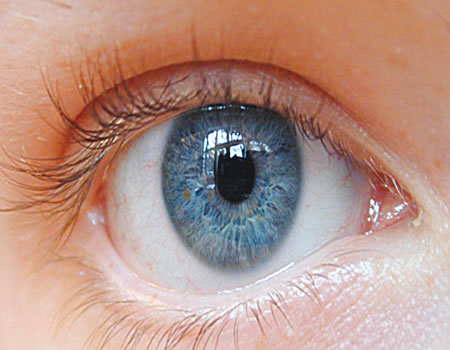
First, that SAN is a lawyer and like most brilliant lawyers full of ideas. Therefore, if I was in hurry, I should not commence the discussion because it might drag on for longer than I could afford. Secondly, a fleeting thought of the Miranda warning (also referred to as the Miranda Rights to Silence), crossed my mind.
“You have the right to silence. Anything you say may be used in evidence against you.” “Damn it! Don’t let this little brat of a lawyer intimidate you! This is not an inquiry. He has asked very simple and pertinent questions, just give him the answer and get done with it,” I admonished myself.
As I raised up my head, our eyes met and SAN said, “Uncle, I am waiting for your answer. I’ll tell you why later.” Why don’t you state your reason before I provide the answer? It’ll make my answer more meaningful,” I replied.
“My ophthalmologist performed an examination on me which he called Gonioscopy. He said it was to determine if my eyes were open or close,” he said. I burst into a hilarious laughter. “Why are you laughing?”, asked SAN. “My learned nephew, aren’t your eyes wide open now?” I teased. Judging from his countenance, I knew SAN was not finding it funny, so I quickly beat a retreat. “SAN, let me go straight to answer your questions and then we shall discuss what Gonioscopy is about and why it was done for you.
“SAN, there are several types of glaucoma but the two main types are open-angle and angle-closure. It is not “open eyes” and “closed eyes” but open-angle and closed-angle (aka narrow-angle, acute glaucoma). These two are marked by an increase of intraocular pressure or pressure inside the eye (IOP).
“I am going to tell you two real life stories to show you the difference between open-angle glaucoma and closed-angle glaucoma. But before I begin, please, stretch out your leg.” He did and I stamped my heel hard on his big toe. He screamed, “Why Uncle? Why? It is very painful! What have I done to deserve this?” “Please, pardon me. Was it really painful?” I asked pretending to be oblivious to his pain. He nodded. PAIN is an important symptom in differentiating between the two. We shall talk more about it later. Now, to my first story.”
“A 50-year-old lady went to a friend’s birthday party with her husband. As they returned home around 10.00pm and about to enter their house, there was a sudden outage throwing the whole place into darkness. Suddenly, Mrs Rosik started to feel some pain in her right eye. By the time her husband was able to open the door, the pain had become unbearable. Analgesics didn’t help and she was taken to the nearest hospital. “This is serious,” the young doctor exclaimed as he looked at her painful red eye, cloudy cornea and dilated pupil.
“I am not really sure of what this is, but I know it is one of three things, acute conjunctivitis, acute uveal inflammation or acute close angle glaucoma. With the cloudy cornea and dilated pupil, I put my bet on acute close-angle glaucoma.”
He called for a tonometer to measure the IOP. It was 56mm Hg in the right and 18mm Hg in the left eye. He screamed! Medication was commenced and within two hours the pain had abated and her vision had improved. What a timely intervention!
My second story is simpler and you already know the person. How can I Uncle, when you never told me any story!”, SAN replied. “But you are the story!” “Me?”, he asked obviously confused. “Didn’t you tell me you went to see the ophthalmologist? You had no pain or discomfort – just a routine visit. He found your IOP to be on a slightly high side and thought that there was some damage to the nerve at the back of your eyes.
He then went ahead to do Central Visual Field (CVF) test to find if the damage seen was real or not. It was real and you told me he performed gonioscopy on your eye. Madam Rosik also had gonioscopy! But while the angle of the anterior segment of her eye was closed 360 degrees, yours was open. “And what does that mean?”, asked SAN.
“It means you have different types of glaucoma. In open-angle glaucoma (the commonest type we see), there is no pain or discomfort. The disease is insidious, does not announce itself, vision loss is gradual – over several years – allowing adaptation until it has become very bad and incapacitating.
That is why it goes almost unnoticed. In close angle glaucoma, the condition starts suddenly, usually provoked by darkness, the pain is terrible, vision loss is immediate and you cannot sit at home without doing something about it. This is a rapidly blinding condition. Immediate and appropriate attention is the only way blindness can be averted.
I switched on my MP Player and selected Fela’s popular song, OPEN AND CLOSE. Without any prompting, SAN started to dance! I made a quick dash out of the room to avoid more questions.
ALSO READ: Prophet T.B. Joshua, New Morning Water and Paris experience





